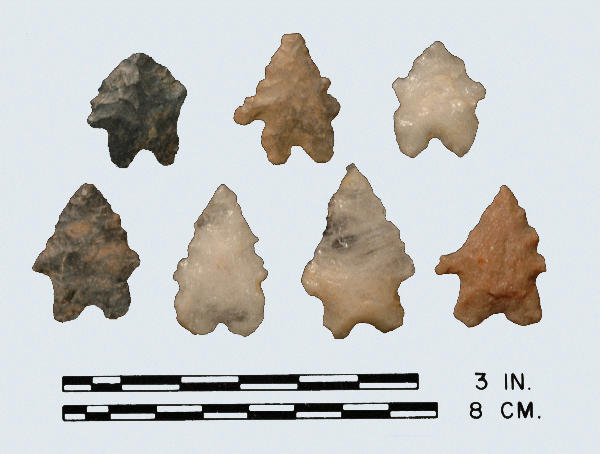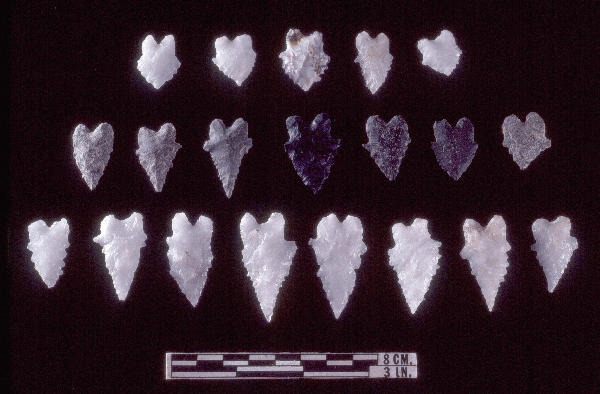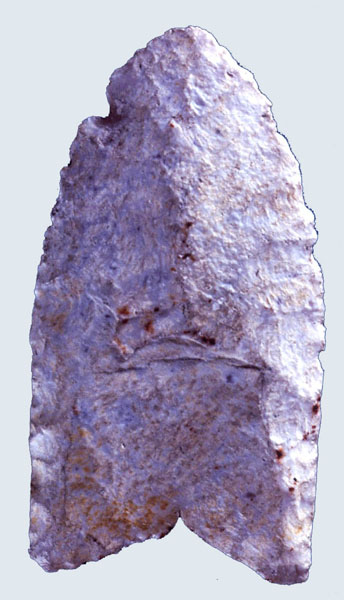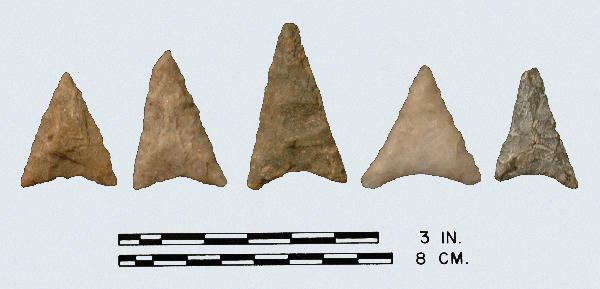
LeCroy: Top Row: chert, chert, quartz; Bottom Row: chert, quartz, quartz, quartzite.

LeCroy: William Allgood Collection; Top Row: quartz, quartz, chert, quartz, quartz; Middle Row: all rhyolite; Bottom Row: all quartz.
Type Bifurcate Early-Archaic
Defining Attributes
The LeCroy is a small, thin point with a bifurcated base.
Chronology
The LeCroy point dates to the Early Archaic period, 6500 to 5700 BCE. At the St. Albans site in Kanawha County, West Virginia, Broyles (1971) obtained a date from a hearth associated with this point type of 6300 +/- 100 BCE. Chapman (1975) at the Rose Island Site, Tennessee, suggests an age of 6300 BCE for the LeCroy complex. At the West Blennerhassett Site (46Wd83-A) also in West Virginia, features associated with the LeCroy type were radiocarbon dated to between 6710 and 6285 BCE (Johnson et al. 2007). McAvoy (1997) recorded a date of 6350+/-110 BCE at the Slade Site in Sussex County, Virginia.
Description
- Blade: The blade is triangular and often has the appearance of being re-sharpened. Edges are most commonly straight although may be occasionally excurvate or incurvate. Blades are often serrated.
- Base: The base is deeply notched and bifurcated. In most examples the stem is straight; in a few examples the stem is flared. Edges of the stem are finely chipped with no evidence of grinding. Shoulders are straight and at right angles to the stem, however in a few examples the shoulder is absent.
- Size: Length ranges from 15 to 35 mm. Width ranges from 15 to 28 mm. Thickness ranges from 3 to 6 mm.
- Technique of manufacture: Made from small oval bifaces by soft percussion, or they were pressure flaked from large flakes.
Discussion
Broyles (1971) noted that the LeCroy type is common in most eastern states from northern Alabama to New York and Michigan and west into Ohio and eastern Kentucky. McAvoy (1979) placed the point at the very end of the Early Archaic transitional into the Middle Archaic. LeCroy type has a bifurcated stem that is vertical, whereas the St.
Albans and MacCorkle types have bifurcated stems that flare and lob out respectively.
Defined in Literature
The LeCroy type is discussed by Broyles (1971) based on points recovered from the St. Albans Site in Kanawha County, West Virginia. This type was originally defined by Lewis and Kneberg.
References




